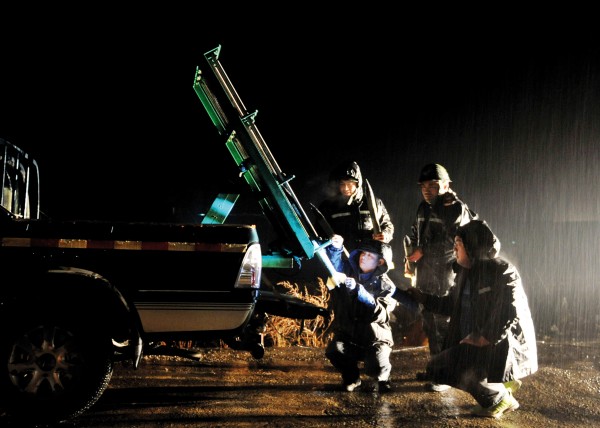What use the wind?
El Nino has us firmly in his grasp as we enter summer, and has been affecting the tropical Pacific for months, bringing, as predicted, drought to the west and floods to the east.
Here in New Zealand south-west winds have been relentless since October, pleasing windsurfers and glider pilots, but wearing down the general populace in many centres. The winds are expected to continue through much of the summer
Of course, it’s an ill wind that blows no-one any good, and as an energy source the wind has served us for thousands of years.
Until the second half of the nineteenth century, it was the main source of power for ships at sea. Among the earliest records of ships with sails are a painting on a 4700-year-old pottery shard from Turkey and a 5300-year-old clay model boat found in Mesopotamia, complete with a socket in the bottom for a mast and a hole in each side for the stays.
But the invention of the sail is likely to have been much earlier than this. Indirect evidence of sails is provided by the arrival of people on the large islands of the Mediterranean such as Crete, Malta, Sardinia and Corsica—and their impact on the bizarre local wildlife. Lacking large carnivores such as lions and leopards, these islands became sites for the evolution of dwarf species of hippopotamus and elephant, one of which was only a metre tall. These midgets all became extinct around 8000 years ago, probably coinciding with the arrival of people, who would have found them easy to hunt. How did humans reach the islands? Probably by sail, for paddling or rowing there would have called for an immense effort.
Even earlier was the peopling of Australia, more than 40,000 years ago, and requiring the crossing of a stretch of open ocean about 80 kilometres wide. In light of the fine tradition of navigation and seamanship found in the Pacific, it is interesting to speculate that some form of sail may have existed even then.
One of the oldest written accounts of ships and sailors is Homer’s Odyssey, composed about 2700 years ago. In the Odyssey, the wind features constantly as one of the agencies through which the gods inflict their will on man. Nowhere more so than when Aeolus gives Odysseus an oxhide bag tied with a silver cord containing all the winds save that from the west, which is left free to blow his ship home. For nine days and nights Odysseus stays awake steering the ship on a fast voyage to Ithaca, but when he is close enough to home to see fires being tended on shore he falls asleep. His crew, suspecting that Odysseus is hiding gold and silver in the bag, untie the cord, destroying forever their hopes of reaching home as the furious winds drive their ship away.
By the time that recorded history began in earnest a few hundred years later, with the wars between the Greeks and the Persians and later amongst the Greeks themselves, the gods had retreated from centre stage, leaving people to sort out the weather for themselves. Indeed, there are several examples of Athenian admirals successfully forecasting wind changes to gain advantage in battle.
However, the importance of the wind in warfare has not been limited to forecasting wind changes at sea. At the battle of Towton in 1461, during the Wars of the Roses, the army of York attacked in a snowstorm with the wind at their backs. After firing each flight of arrows, their archers retreated a little so that the Lancastrian return fire fell short (although this was poorly observed by the Lancastrians because of the snow blowing in their faces). Unharmed, the Yorkist archers then collected their enemy’s arrows and returned them to cat effect.
During the First World War, wind was used to waft poisonous gas towards an enemy, with horrifying consequences. Poison gas seems to have been first used in war by the Chinese more than 2000 years ago—an apparent extension of their tradition of fumigating houses against bookworms.
Sails, the prime harnessers of wind, have not been restricted to nautical use. On land they are famously associated with windmills. The first record of windmills stems from the Middle East around the seventh century A.D., when sails that rotated around a vertical axis were used. The idea seems to have been taken back to Europe by the Crusaders, as the first windmills appear there about the 12th century A.D. However, the European versions were far more powerful than their eastern predecessors, as their sails rotated about a horizontal axis.
Wind power has been largely superseded by other types of energy in the last 100 years, but is now making a comeback in the form of wind turbines to generate electricity.
Another intriguing use of the wind has come to light in Sri Lanka, where new archaeological evidence has shown that the wind was used to help forge high-carbon steel from the third century B.C. until the 13th century A.D. Furnaces were sited along the crest of a ridge so that they were side-on to the prevailing wind. As the air rose up and over the furnace, it accelerated over the front lip, creating an area of low pressure along the top of the furnace. Holes made near the base of the front wall of the furnace took advantage of this difference in air pressure to drive air through the furnace, enabling high temperatures to be reached. Using a replica furnace, archaeologists achieved temperatures of over 1500°C. The ridges used for these smelting sites were carefully chosen so that they experienced regular strong fohn winds during the monsoon.
Among the many uses of wind, none is more colourful or sublime than in the sport of kite flying. In China, kites have been flown for over 2000 years for a variety of purposes, not just recreational. Kites were used to drop messages in war, to carry fishing lines away from boats and to fly musical instruments such as a gourdlike framework with seven strings across it known as a “hawk lute.” Chinese kites were made in the shape of birds, butterflies, dragons, frogs, centipedes and hundreds of other creatures, both real and imaginary. Some had rolling eyes with moving paws and tails. Others carried people, possibly as high as 1000 metres. For Taoists, kite flying was a meditative exercise. The constant adjustment of the tension in the kite-string to allow for frequent wind changes brought them in touch with the world in a way described as “following the grain of the universe.”
Kites were unknown in Europe until the late 16th century, but were brought to New Zealand by the Maori, who made them from raupo leaves and the bark of the paper mulberry tree. Although flown for pleasure by young and old, Elsdon Best records that they were also used for divination and for war. When preparing to attack a pa, a tohunga would fly a kite over the pa. If it flew in a lopsided manner it was a sign the attack would.
If possible, the kite was released so that the cord trailed over the pa. It was believed that the cord possessed magic powers endowed by the incantations of the tohunga, and should the defenders of the pa touch it they would be defeated.
On one occasion in the Wairarapa, a large kite was used to drop a warrior inside an enemy pa during the night, so that he could open the gates for the attacking party.
As well as sports which employ the wind directly—such as hang-gliding or sailing—there are some which use it indirectly (surfing relies on waves generated by wind) or include it in their tactics—the team which wins the toss in a rugby game will often base its decision on which direction to play in on the wind. In cricket, spin bowlers bowling into the wind can get the ball to “hold up,” and so deceive the batsman about its path.
From lofty matters such as the design of airports (so that the runway is aligned with the wind’s preferred directions) to trivial decisions such as doing the washing on a windy day, the wind is humanity’s constant companion. (Curiously, the invention of the clothesline remains one of the great unsolved mysteries of archaeology!)
But we have the wind to thank for more than this. When the Rocky Mountains rose up about 15 million years ago, the prevailing westerly winds created a rain shadow over the plains. This area, once covered in forest, was now replaced by grass. The diminutive ancestor of the horse had lived in the forest browsing on tree leaves. When the forest retreated from the mountains, this animal evolved to graze on grass and gradually increased in size to become the horse we know today.
One could say that the west wind is the father of the horse, and the Rocky Mountains its mother.
Think about that as you try to hold down the beach umbrella this summer!

















